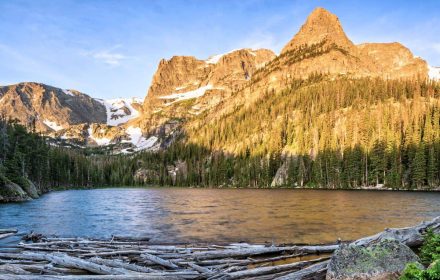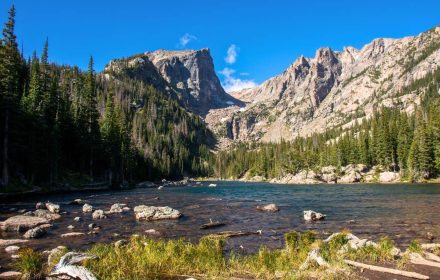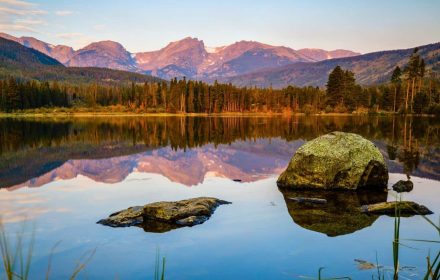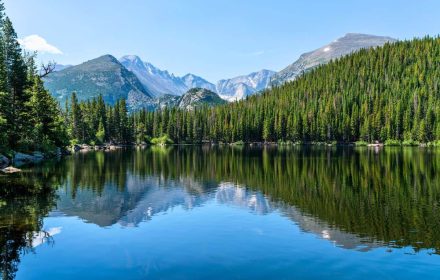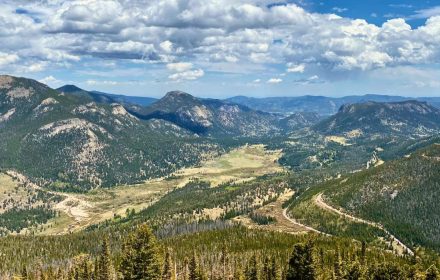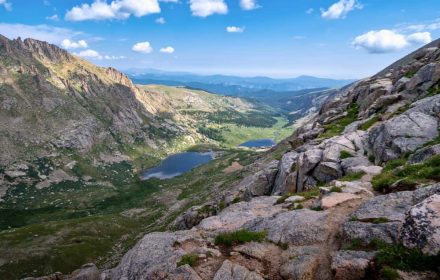This site uses affiliate links, meaning that if you make a purchase through our links, we may earn an affiliate commission.
The Maroon Bells are one of Colorado’s most iconic spots, with their striking mountain peaks and the incredible mirror-like reflection you’ll see on Maroon Lake.
Just a quick trip from Aspen, this spot is a must for anyone who loves stunning mountain views, easy access to nature, and beautiful hikes.
If you’re wondering how to visit the Maroon Bells, this guide covers everything you’ll need to know—from reserving your visit and getting there, to hiking up to Crater Lake for even more unforgettable scenery.
Getting to Maroon Bells from Aspen
The Maroon Bells are located about 10 miles southwest of downtown Aspen, within the White River National Forest.
To reach the Maroon Bells parking lot (Map) from Aspen, take Maroon Creek Road from the roundabout on Highway 82, heading toward Aspen Highlands. This scenic drive takes around 20-25 minutes.

Sign to Maroon Bells Road / How to Visit the Maroon Bells
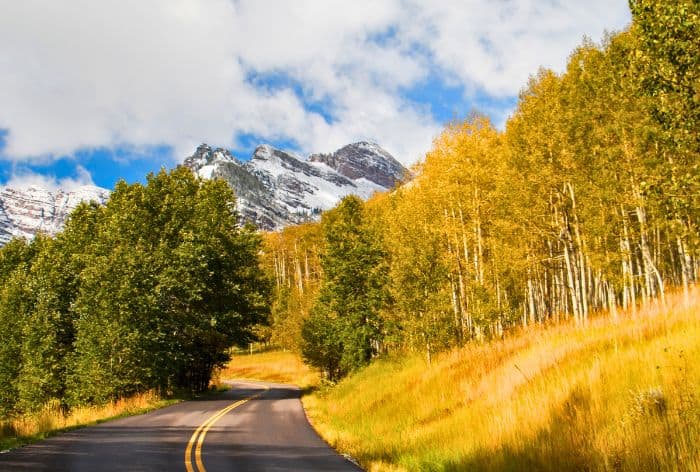
Road to Maroon Bells / How to Visit the Maroon Bells
Maroon Bells Reservations
While the drive to Maroon Bells is pretty much straightforward, visiting requires some planning, especially during peak season.
Here is what you need to know:
- Parking and Vehicle Access:
To preserve the environment, private vehicle access to Maroon Bells is limited.
From late May to mid-October you are not allowed to drive the Maroon Creek Road between the hours of 8 am to 5 pm. Only shuttle busses are allowed on the road during that time.
However, you can drive up to the parking area before 8 am and after 5 pm but you will need a parking reservation.
Reservations cost about $10 per car and you can reserve a parking spot here.
During the shoulder seasons or outside these hours, private vehicles are permitted.
- Shuttle Service:
Between late May and October, a shuttle bus runs from Aspen Highlands to Maroon Bells.
It costs $16 per adult and $10 for kids under 12.
This shuttle operates every 15 minutes from 7 am to 5 pm, providing an eco-friendly and hassle-free way to reach the Bells without the need for parking.
Tickets are available in advance, and it’s strongly recommended to reserve early since they often sell out. You can reserve shuttle tickets here.
GOOD TO KNOW: The Maroon Bells recreational fee of $10 is included in an annual U.S. National Parks pass, but parking reservations are still required and fees apply. If you do not have the annual pass a $10 fee is required at the Welcome Center Entrance Self-Pay Station
Best Time to Visit the Maroon Bells
The best time to visit the Maroon Bells is from mid-June to early October, when the area is open and accessible. Summer brings mild temperatures and lush greenery, making it ideal for hiking.
Late September to early October is particularly popular for the vibrant fall colors, as the aspen trees turn gold, creating a stunning contrast with the Maroon Bells.
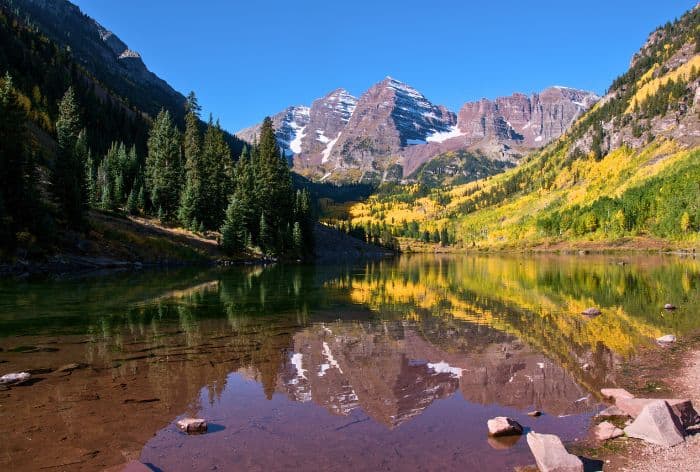
Maroon Bells in the Fall / How to Visit Maroon Bells
Winter access is limited to snowshoeing or cross-country skiing, as Maroon Creek Road is closed to vehicles.
Make Sure to Catch the Famous Reflections on Maroon Lake in the Morning
One of the most rewarding times to visit Maroon Bells is early in the morning, especially around sunrise!
During this time, Maroon Lake is often calm, creating a stunning mirror-like surface that perfectly reflects the Maroon Bells’ peaks and surrounding landscape.
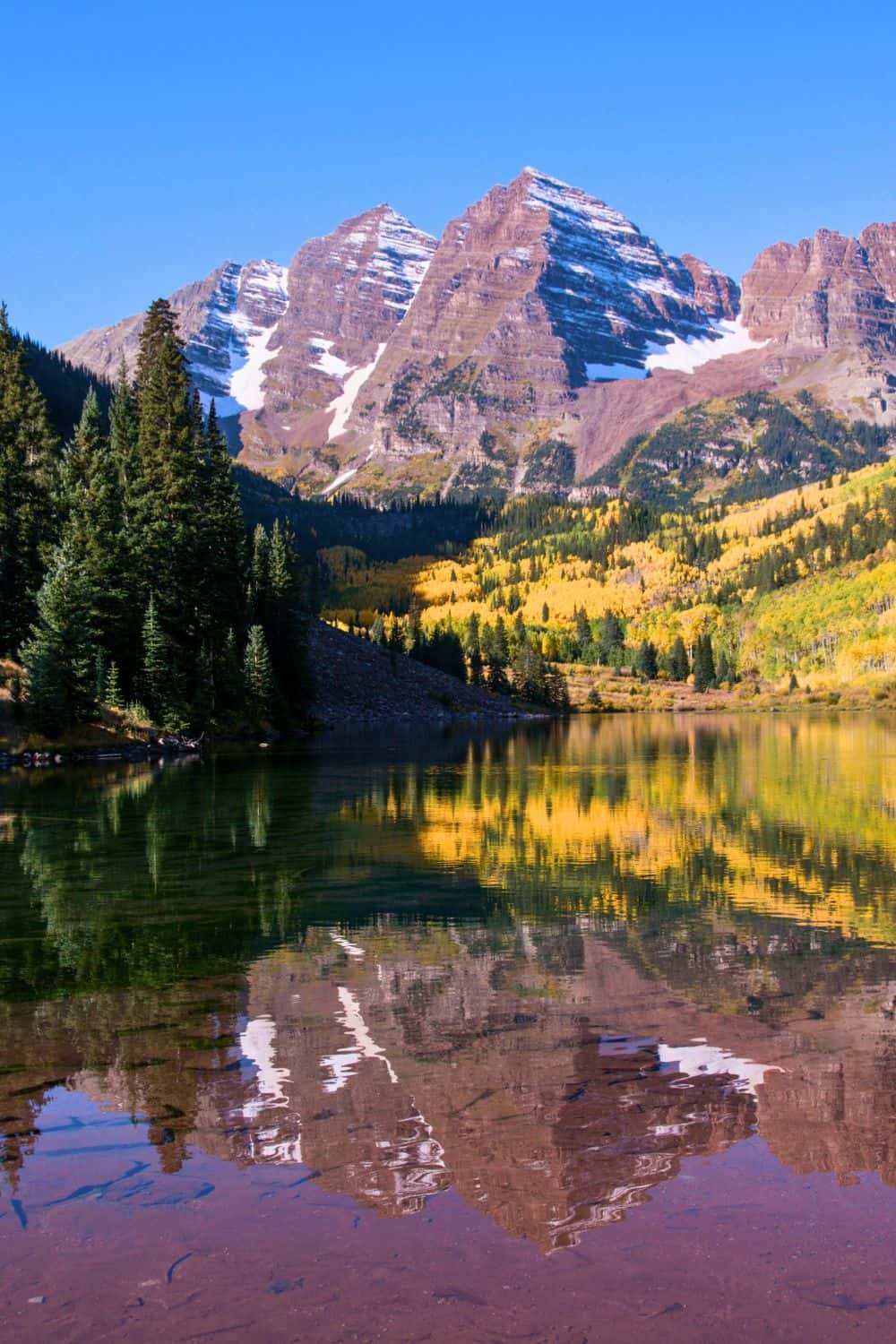
Reflections of Maroon Bells / How to Visit the Maroon Bells
Visiting at dawn also has practical advantages. In summer and early fall, Maroon Bells Scenic Area is highly popular, and crowds can grow quickly. Arriving early helps secure a prime viewing spot along Maroon Lake and, if driving, ensures a parking spot before restrictions begin later in the morning.
During peak foliage season in late September, the reflections are particularly captivating, with golden aspen trees surrounding the lake and adding vibrant colors to the view.
PRO TIP: Plan to get there at least 30 minutes before sunrise for the best experience, as this gives you time to settle in and enjoy the pre-dawn light before the first rays hit the peaks.
Hike Maroon Bells Scenic Trail
The best way to explore the area is to hike the Maroon Bells Scenic Trail. It is a short, easy hike that starts by the parking lot at the end of Maroon Creek Rd. (Map)
The trail goes on the northern side of the lake, then makes loops back to the same path and brings you back to the parking lot. The hike is about 3 miles in total and it is suitable for most fitness levels
Along the way, you will have Maroon Lake and stunning views of the iconic peaks.
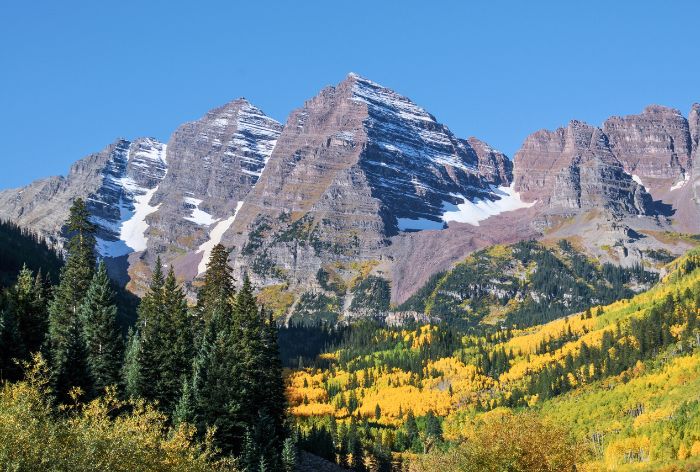
Maroon Bells / How to Visit the Maroon Bells
Hike to Crater Lake
If you’re up for extending your hike, I highly recommend continuing on to Crater Lake. This trail not only brings you closer to the iconic Maroon Bells peaks but also offers breathtaking views along the way.
GOOD TO KNOW: As you hike the Maroon Bells Scenic Trail, you’ll reach a fork in the trail. If you veer left, you’ll continue along the lakeshore with stunning views of Maroon Lake and the surrounding peaks.
If you choose to go right, the trail will lead you towards Crater Lake, offering even closer views of the Maroon Bells. This fork provides an easy way to decide whether to extend your hike towards Crater Lake or take a shorter route around the lake’s edge.
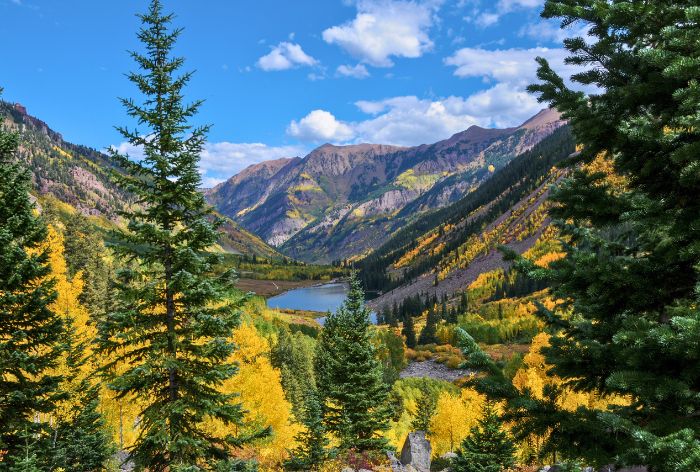
View of Maroon Lake / How to Visit Maroon Bells
The hike to Crater Lake covers a total distance of 3.6 miles round trip with an elevation gain of 690 feet.
Depending on your pace, the hike will take around 2 to 3 hours and is considered moderate due to some rocky terrain and the elevation gain.
As you move along, you’ll pass through forests of aspen trees, which are especially colorful in autumn, and navigate rocky boulder fields.
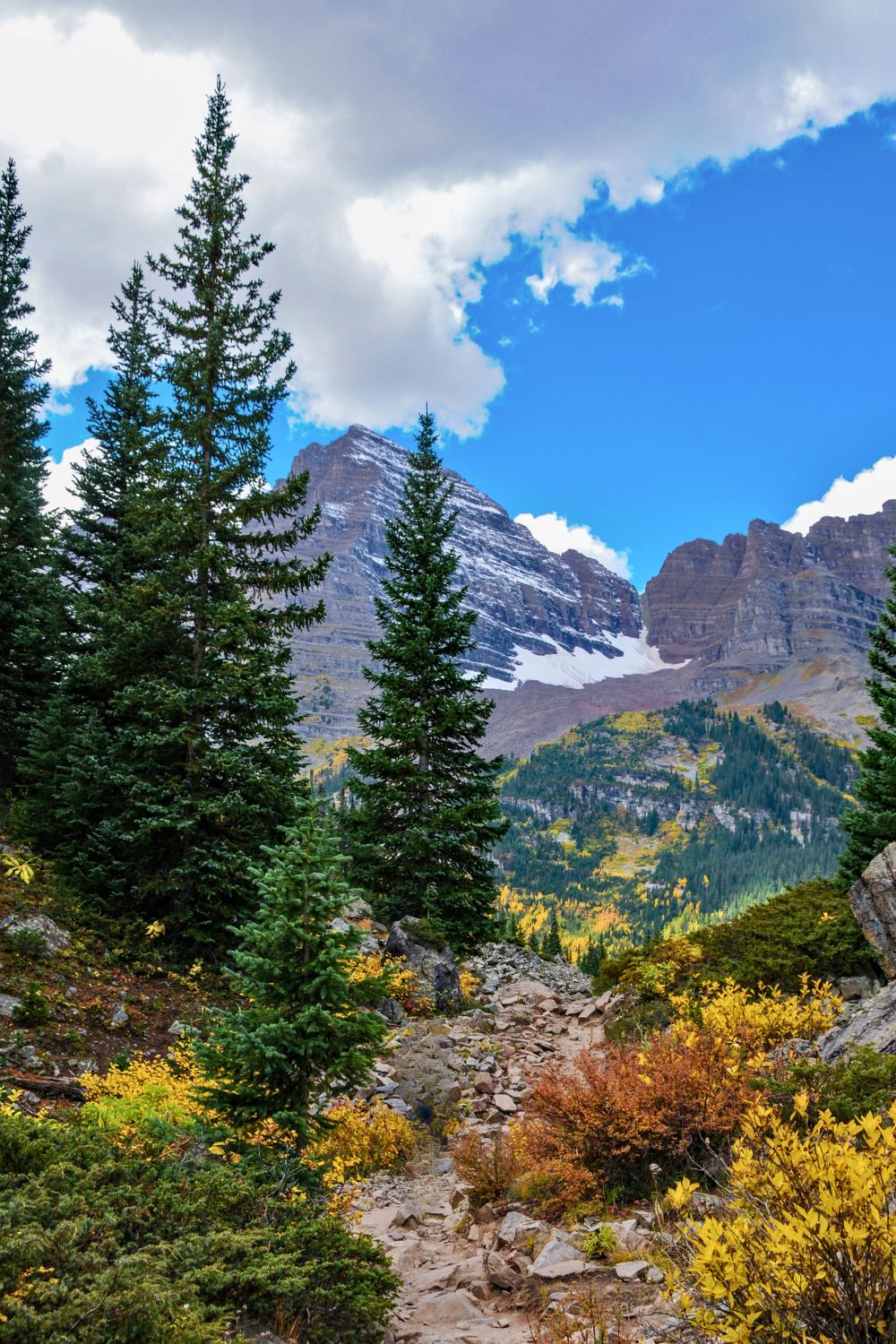
Trail to Crater Lake / How to Visit the Maroon Bells
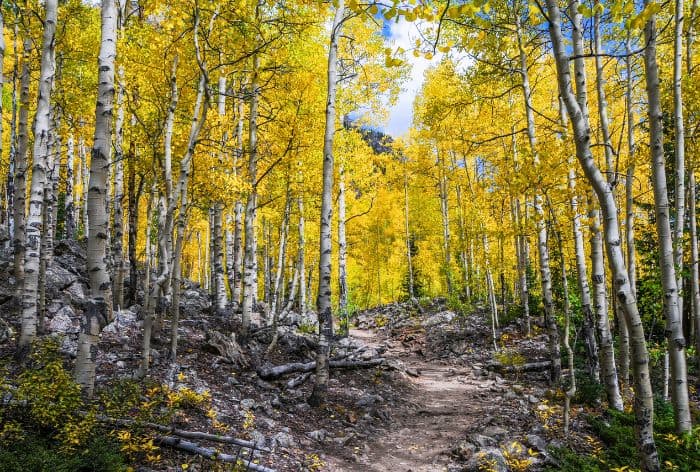
Trail to Crater Lake / How to Visit the Maroon Bells
Once you reach Crater Lake, the sight of the Maroon Bells towering over the lake is breathtaking.
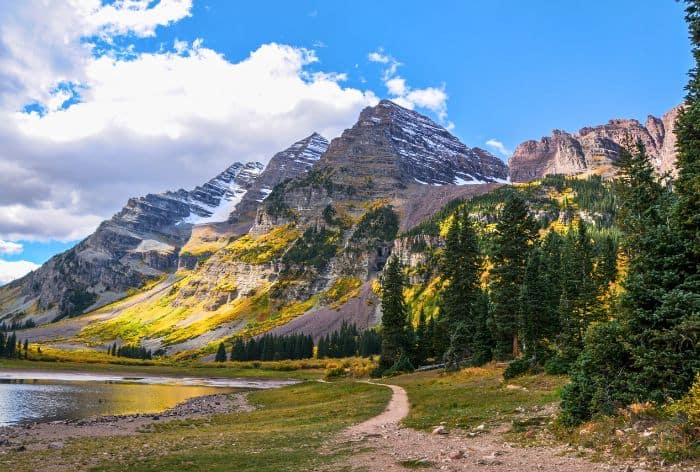
Trail to Crater Lake / How to Visit the Maroon Bells
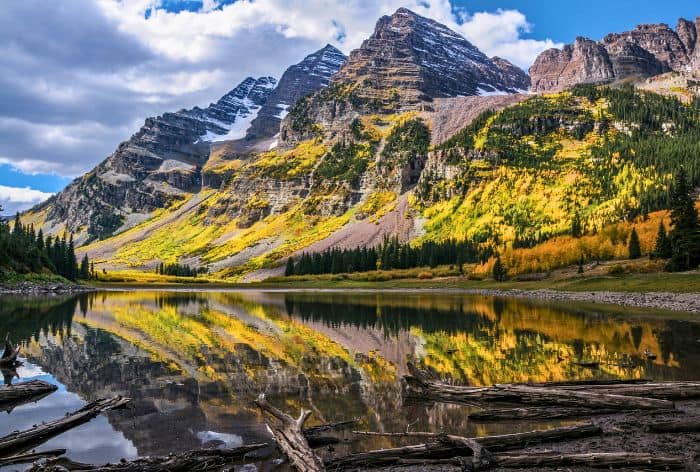
Crater Lake / How to Visit the Maroon Bells
GOOD TO KNOW: The iconic peaks of Maroon Bells are Maroon Peak and North Maroon Peak. These two mountains, located in the Elk Mountains of Colorado, are well-known for their striking reddish-brown color, which gives them a dramatic and unique appearance, especially when seen at sunrise or sunset.
Maroon Peak stands at 14,163 feet (4,320 meters), and North Maroon Peak reaches 14,019 feet (4,270 meters). Together, they create one of the most photographed mountain landscapes in North America, especially when their reflection is captured in the calm waters of Maroon Lake.
Here Are Some More Ideas of Places to Visit in Colorado:
Perfect One Day in Great Sand Dunes National Park (4 Things You Can’t Miss)
How to Visit Garden of the Gods, Colorado (7 Best Things You Can’t Miss)
24 Best Stops on Rim Rock Drive in Colorado National Monument (Maps, Tips, Hikes)
9 Best Hikes in the Bear Lake Corridor, Rocky Mountain National Park (Maps and Tips)
18 Best Stops on Trail Ridge Road in Rocky Mountain National Park
12 Best Stops and Hikes on Peak to Peak Scenic Byway in Colorado (Maps+Useful Tips)
14 Things You Can’t Miss on First Visit to Glenwood Springs, Colorado
2 DAYS in MESA VERDE National Park (Perfect Itinerary for First Visit)
23 Practical Tips for FIRST VISIT to MESA VERDE National Park
Did You find How to Visit Maroon Bells near Aspen Useful?
Why Not Save It to Your Pinterest Board!


Now, It Is Your Turn, I Would Like to Hear Back from You!
Are you planning your trip to Colorado?
Please let me know!
Drop me a quick comment right below!
Click on any of the images below to get inspired!
